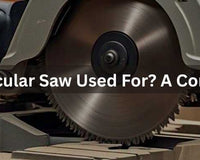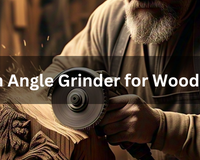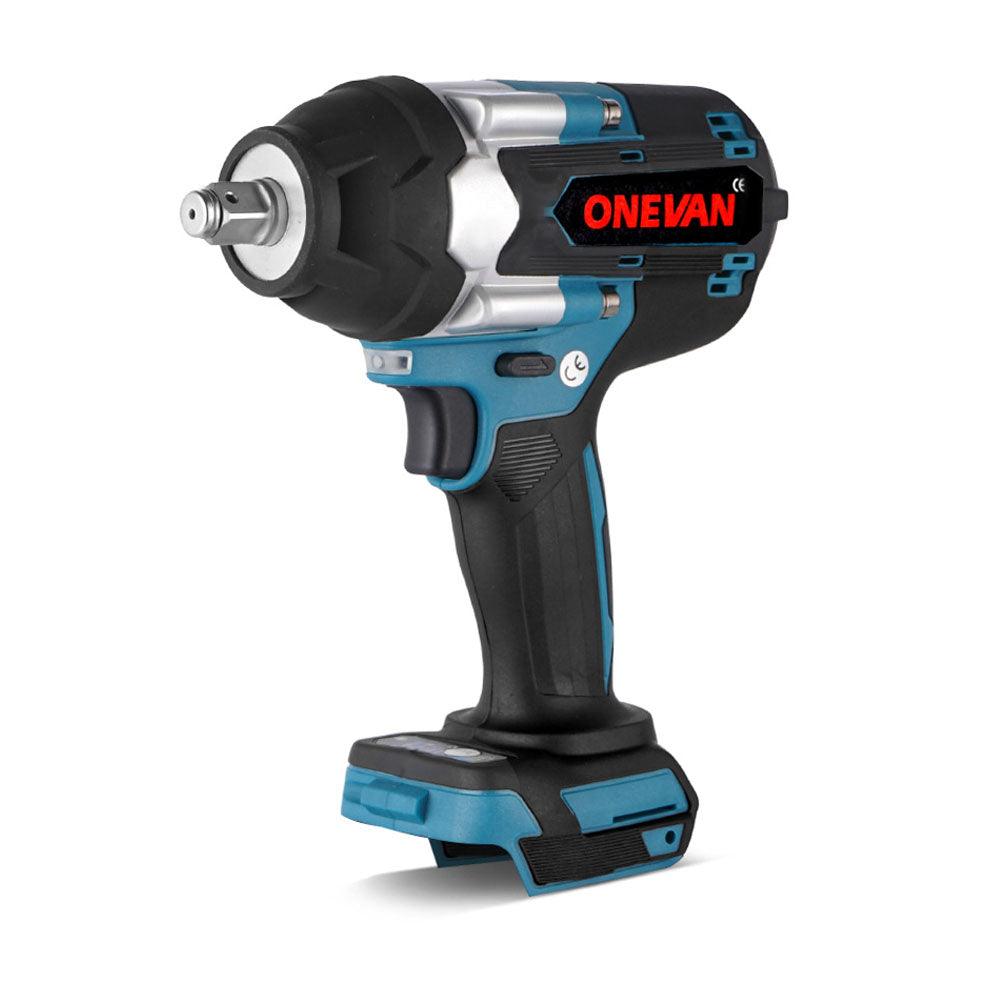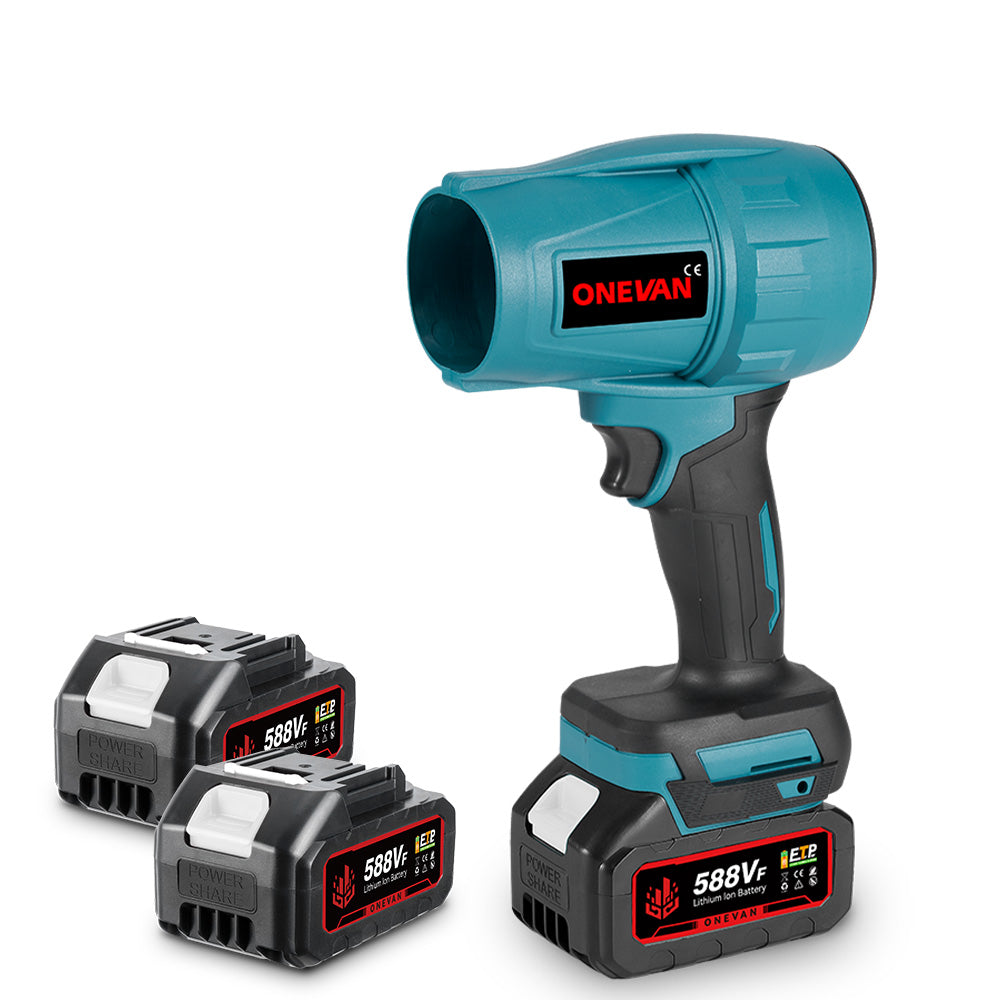Many people have asked: “Can a circular saw cut metal?” We all know these tools as woodworking beasts, but their versatility might surprise you. The short answer? Yes, they can, but there are important considerations to keep in mind. When attempting to cut metal with a circular saw, one quickly learns that you can't just grab any blade and go for it. After ruining a perfectly good wood blade, doing homework is a good option.
This guide is about that whether you're trying to avoid buying yet another specialized tool or simply curious about pushing your circular saw's limits, this article will walk you through what actually works based on years of trial and error. Let's cut through the confusion (pun intended) and get practical about what these tools can and can't handle when it comes to metal.
1. How Thick of Metal Can a Circular Saw Cut?
Factors Affecting Cutting Depth
Before you start slicing through steel, understand that several critical factors will determine your success:
- Motor Power: I've found that anything less than 15 amps struggles with metal thicker than sheet metal. Higher amperage saws provide the additional power necessary for substantial cuts.
The ONEVAN 180mm Brushless Cordless Circular Sawhas an efficient brushless motor that delivers significant power within its 18V-21V range. It is best for a variety of cutting tasks, including thinner metal.
-
Blade Quality: This isn't the place to pinch pennies. Premium metal-cutting blades make a night-and-day difference compared to budget options. You might have learned this lesson after burning through three cheap blades on a single project.
-
Saw Speed: Metal requires slower RPMs than wood. Think of it as driving through a school zone rather than the highway. Variable-speed saws are gold here.
- Heat Dissipation: Metal cutting generates serious heat. Without proper heat management, your blades will warp, and your motor may fry.
- Saw Design: In my experience, worm drive saws handle metal better due to their superior torque, even though they're heavier to maneuver.
Cutting Mild Steel
For mild steel, the following thicknesses can be handled with a circular saw:
Sheet Metal (16-24 gauge)
Nearly any circular saw with a proper metal blade will slice through this like butter.
1/8" (3mm) Mild Steel
Most standard 15-amp circular saws can handle this thickness with a good ferrous metal blade. This is about the thickness of a steel electrical box.
1/4" (6mm) Mild Steel
At this thickness, we are approaching the limits of what standard circular saws can handle. Yes, higher-powered saws can cut 1/4" steel, but the cutting speed will be slower, and regular breaks will be necessary to prevent overheating.
Cutting Thicker Steel or Other Metals
Beyond 1/4" steel, you're really testing boundaries, but other metals offer different possibilities:
Aluminum:
This stuff is far more forgiving. I've successfully cut a 3/8" aluminum plate with a circular saw and proper non-ferrous blade. The chips fly differently, appearing more like curls compared to the fine particles produced when cutting steel.
Copper and Brass
Similar to aluminum in cutting capacity (up to about 3/8"), but brass tends to dull blades faster. Cutting brass produces a distinctive smell that is often noted by those who work with the material.
Cast Iron
You might have tried this once It is not advisable to attempt cutting cast iron with a circular saw. The brittleness of cast iron can lead to unexpected breaks, posing a danger to the user. It is not worth the risk to you or your saw.
If you frequently cut metal thicker than 1/4", it is advisable to invest in a dedicated metal-cutting saw for better performance and safety. Your fingers, workshop, and wallet will thank you in the long run.
2. What Kind of Circular Saw Blades Are Used to Cut Metal?
Best Blades for Steel (Ferrous Metals)
Steel demands specific blade characteristics:
High-Speed Steel (HSS) Blades:
These blades have fine teeth (50-80 teeth on a 7-1/4" blade) designed with negative rake angles, which help cut sheet metal and thin steel. They are great for sheet metal and thin steel up to 1/8", but they wear relatively quickly. You should keep a couple of these blades in your tool kit for quick jobs.
Carbide-Tipped Ferrous Metal Blades
It is more expensive upfront but outlasts HSS many times over. Look for blades explicitly labeled for steel with 40-60 teeth.
Abrasive Metal-Cutting Discs
Not technically blades but rather fiberglass-reinforced cutting discs. They're cheap, effective, and wear down steadily. The downside? They create spectacular showers of sparks and lots of dust.
Speed matters enormously with steel. While wood can typically be cut at speeds higher than 5,000 RPM, steel cutting is most effective at around 1,000-1,500 RPM for a 7-1/4" blade.
Best Blades for Aluminum & Non-Ferrous Metals
Aluminum and other non-ferrous metals play by different rules:
Aluminum-Specific Blades
These feature what manufacturers call "triple-chip grind" teeth and wider gullets. This design prevents aluminum chips from clogging the blade.
The ONEVAN 125mm cordless circular saw, with its 125mm blade and strong motor, effectively cuts aluminum. It can easily cut thinner sheets and smaller projects. Incorporate aluminum-specific blades for better results.
Non-Ferrous Metal Blades
Look for teeth with a slight positive hook angle (around 5°). This prevents the blade from aggressively "grabbing" the softer metal, which can yank the saw forward unexpectedly.
TCT (Tungsten Carbide Tipped) Non-Ferrous Blades
A go-to for regular aluminum work. They're more expensive but deliver cleaner cuts and last longer.
When cutting aluminum, you can run at higher speeds than steel—typically around 3,000-4,000 RPM works well. The material cuts almost too easily sometimes, which presents its own challenges in controlling the saw.
Carbide-Tipped vs. Diamond Blades – Which is Better?
Having used both extensively, here's the take:
Carbide-Tipped Blades:
- Perfect for most metal-cutting tasks the average person encounters
- More affordable (usually $25-$60 compared to $100+ for a diamond)
- Provide a good life span for occasional to moderate use.
- Work well for both ferrous and non-ferrous metals with appropriate designs.
Diamond Blades:
- Rarely necessary for standard metal cutting
- Perform exceptionally well on extremely hard materials
- Cost significantly more (often $100-$300)
- Can deliver thousands of cuts when used correctly
- Overkill for most DIY applications
3. What Materials Cannot Be Cut with a Circular Saw?
Hardened Steel & Tool Steel (Why It Won't Work)
Learn from the mistake—I once tried cutting an old file (hardened tool steel) and immediately ruined an expensive blade:
Too Hard
Materials with Rockwell hardness above 55 HRC will instantly destroy standard metal-cutting blades.
Heat Problems
The extreme heat generated alters the carefully heat-treated properties of tool steels, potentially ruining both your workpiece and blade.
Equipment Damage
Beyond blade damage, you risk motor burnout and even warping your saw's base plate.
Poor Results
Even if you persist, the cut will be rough, inaccurate, and potentially dangerous.
Due to their hardness, cutting materials such as hardened steel, spring steel, or tool steel typically require specialized equipment like abrasive waterjets or EDM machines. Some things just aren't worth forcing.
Stainless Steel – Possible or Not?
Stainless steel presents unique challenges I've tackled with mixed results:
Thin Stainless (20-16 gauge)
Definitely doable with specific stainless steel cutting blades. I've cut stainless steel backsplashes this way with good results.
Medium Stainless (1/8"-1/4")
Possible but challenging. Use premium carbide-tipped stainless steel blades, take your time, and be prepared to take breaks to allow the material and tool to cool down.
Thick Stainless (>1/4")
Experts wouldn't recommend it. Stainless steel's work-hardening properties make thick cuts a nightmare with a circular saw..
The critical factor when cutting stainless steel is to prevent work hardening. Once you learn to make steady, continuous cuts without stopping mid-material, your results will improve dramatically. Using cutting oil also helps tremendously.
Non-Metal Materials to Avoid (Tile, Stone, etc.)
While we're focusing on metals, let's read about other materials that people often ask about:
Ceramic Tile & Porcelain
Cutting ceramic tile and porcelain requires water cooling and specialized diamond blades to prevent overheating and damage. I've seen the aftermath of someone trying this with a standard saw—cracked tiles and a ruined tool.
Natural Stone
The silica dust generated when cutting natural stone is extremely hazardous to inhale, and the material is too abrasive for standard saws.
Concrete & Masonry
Similar issues to those of stone are harmful dust and rapid blade wear.
Fiberglass & Carbon Fiber
The dust is hazardous, and these materials will quickly dull standard blades. Plus, the cut edges fray badly without specialized blades.
Sometimes, the right answer is simply renting the correct specialized tool for a day instead of pushing your circular saw beyond its capabilities.
4. Step-by-Step Guide to Cutting Metal with a Circular Saw
Step 1: Gather Your Tools and Materials
Materials Needed:
- Metal workpiece (aluminum, steel, etc.)
- Appropriate metal cutting circular saw blade
- Safety gear ( never skip gloves, goggles, ear protection, and a respirator)
Tools Required:
- Circular saw (corded or cordless)
- Clamps or a vise (at least two heavy-duty clamps)
- Measuring tape
- Marker or chalk (prefer soapstone markers for dark metals)
- Straight edge or square
- Cutting oil (3-in-1 oil works in a pinch, but dedicated cutting oil is better)
- Fire extinguisher (learned this necessity the hard way)
Verify this list before starting. There is nothing worse than getting halfway through a project and realizing you're missing something essential.
Step 2: Prepare Your Work Area
Choose a Suitable Work Surface
You should prefer working on steel sawhorses with a sacrificial plywood top. Whatever you use, make sure it's solid and won't wobble. Remember that the cut-off piece needs somewhere to go without pinching the blade.
Clear the Area
Metal cutting creates sparks that can travel surprisingly far. Clear everything flammable and ensure good ventilation—metal fumes aren't something you want to breathe.
Step 3: Measure and Mark the Cut
Measure the Length
Always measure at least twice. Precision matters more with metal than wood because mistakes are harder to fix. You should also measure from multiple reference points to verify accuracy.
Mark the Cut Line
For steel, use a silver Sharpie or soapstone pencil. For aluminum, a regular permanent marker works well. Make your line bold and clear—it can be hard to see once you start cutting.
Step 4: Secure the Workpiece
Clamp the Metal
This is crucial. Metal shifts differently than wood during cutting. Secure both sides of the cut line, fully supporting both pieces. Any movement during cutting can bind the blade and cause a dangerous kickback.
Step 5: Setup the Circular Saw
Install the Metal Cutting Blade
Make sure the saw is unplugged or the battery is removed before changing the blades. Check that the blade is mounted with teeth pointing in the correct direction— always rotate it by hand to verify free movement.
Adjust Cutting Depth
Set your blade to extend just 1/8" past the thickness of the material. Anything deeper increases risk without benefit.
Select Speed Settings
If your saw has variable speed, set it appropriately. Slower is better for steel, and a moderate speed works well for aluminum.
Step 6: Safety First
Wear Safety Gear
Safety goggles (not just glasses), ear protection, heat-resistant gloves, and a respirator rated for metal dust are non-negotiable items. Metal sparks can easily get behind regular glasses, and the noise level can quickly damage hearing.
Check Surroundings
Always make sure no one is standing in the path of potential sparks. Have that fire extinguisher within arm's reach—not across the room.
Step 7: Begin Cutting
Position the Saw
Line up the blade with your marked line, keeping the saw base flat against the workpiece. Position yourself to the side rather than directly behind the saw in case of a kickback.
Start the Saw
Power up before touching the metal, allowing the blade to reach full speed. Contacting the metal while the blade is speeding up can cause grabbing.
Make the Cut
Advance steadily with moderate pressure. Let the saw do the work—you will learn that forcing it creates excess heat that dulls blades quickly. Keep a consistent pace; stopping mid-cut often creates problems.
Use Cutting Oil
For thicker materials, have a helper apply cutting oil during the cut or stop occasionally to apply more. It makes a remarkable difference in cut quality and blade life.
Step 8: Complete the Cut
Finish the Cut
Maintain your pace until you've completed the material. Slowing down at the end often causes more problems than it solves.
Check the Cut
After finishing, examine the cut quality while being careful of sharp edges and heat. Fresh-cut metal can be hot enough to cause serious burns.
Step 9: Clean Up
Remove Scraps
Metal scraps and shavings are incredibly sharp. Use gloves and a magnetic sweeper to ensure you get all the small pieces that might otherwise end up in someone's foot later.
Store Tools Safely
Clean your saw thoroughly after cutting metal, as the particles can affect wood-cutting performance later. If you primarily use your saw for wood, consider removing the metal blade to prevent accidental use of the wrong material.
5. Common Mistakes When Cutting Metal with a Circular Saw
Using the Wrong Blade
I've made this costly error more than once:
Wood Blades on Metal
This is a recipe for disaster. Wood blades have the wrong tooth geometry and will catch, kick back, or shatter when used on metal.
Ferrous Blades on Non-Ferrous Metals
The first time you try cutting aluminum with a steel blade, it is instantly clogged with aluminum particles, creating dangerous heat buildup.
Incorrect Teeth Count
I've found that too few teeth create rough cuts and grabbing, while too many teeth cause overheating as each tooth can't effectively clear chips. The right blade makes all the difference. I label my metal-cutting blades clearly to avoid mix-ups when in a hurry.
Overheating & Blade Warping
This is the nemesis of successful metal cutting:
Blade Warping Signs
Watch for discoloration (blue tint on the blade) and wobbling during operation. If you see a blade starting to wobble, stop immediately—it is already too late for that blade.
Material Work-Hardening
Especially with stainless steel, overheating creates a hardened zone that becomes nearly impossible to cut through.
Extending Blade Life
You should take regular breaks during extensive metal cutting, allowing both the blade and saw motor to cool. Patience saves money here.
To prevent overheating, make smooth, continuous cuts whenever possible, use appropriate cutting oil, and never force the saw through the material.
Kickback Happens
Metal kickback is particularly violent and dangerous:
Personal Experience
I once had a sheet of steel pinch a blade, sending the saw flying backward. Luckily, I was positioned correctly and avoided injury, but it left an impression.
Prevention Techniques
Ensure both sides of the cut are properly supported, check that the blade isn't dull, and maintain firm control of the saw throughout the cut.
Proper Stance
Position yourself slightly to the side of the cut line, never directly behind the saw, and maintain solid footing in case you need to react quickly.
Always maintain complete focus when cutting metal. This isn't a task where you can let your mind wander.
6. Which Type of Circular Saw is Better for Cut Metal?
Corded Circular Saws
After trying both extensively for metal cutting, here's the take on corded models:
Consistent Power
For thick metal cuts, I prefer corded saws. They maintain steady power throughout extended cuts without battery anxiety.
Higher Amperage
For example, a 15-amp corded saw outperforms even the best 20V cordless circular saw in tough metal cuts.
Endurance Factor
When cutting dozens of steel brackets for a commercial project, corded saw can run all day without breaking a sweat.
Value Proposition:
The money saved on a corded saws can be invested in better blades, which ultimately matter more for cut quality. The obvious downsides are mobility and cord management, which can be frustrating on some job sites.
Cordless Circular Saws
Modern cordless circular saws have come a long way for metal cutting:
Portability Advantage
Cordless circular saws are the only practical option for cutting metal roofing installed on a shed.
Brushless Benefits
A brushless cordless circular saw runs cooler and more efficiently than its brushed predecessor, which matters greatly when pushing the tool with metal cutting.
Battery Considerations
It is important to note that metal cutting drains batteries significantly faster than wood cutting. Carry at least two spare batteries when tackling metal.
Recent Improvements
The latest generation 20V and 60V cordless circular saws have narrowed the gap significantly. The 60V saw handles 1/8" steel almost as well as the corded model.
Pneumatic Circular Saw
Air-powered saws offer a unique approach to metal cutting.
Consistent Power
A pneumatic saw maintains a steady, powerful RPM when tackling prolonged cuts through thick steel.
Duty Cycle Advantage
The pneumatic saw can run continuously for extended periods. This continuous operation capability makes pneumatic saws ideal for high-volume metal fabrication.
Noise and Air Supply
I've learned to manage the significant noise and the need for a robust air compressor. The constant hiss and the requirement for a long, heavy air hose are trade-offs—trade-offs for consistent power.
Specialized Blades
A pneumatic saw performs best with specialized high-speed steel or carbide-tipped blades designed for metal. These blades are often more expensive but provide cleaner cuts and a longer lifespan compared to general-purpose blades.
7. Circular Saw Replacement Tool for Cutting Metal
Some replacement tools can be used to cut metal also. These are:
Angle Grinder: Angle grinders are versatile. They are used for cutting, grinding, and polishing. The ONEVAN Cordless Angle Grinder boasts a powerful brushless motor, overload protection, and a thickened cover shield for safety. Six-speed settings allow for precise control. Its ergonomic design and enhanced side handle provide comfort and stability during operation.
Plasma Cutter: Plasma cutters produce clean, precise cuts. They are used in thick metal sheets.
Oxy-Acetylene Torch: Oxy-acetylene torches handle heavy-duty cutting. They also handle welding.
Metal Shears: Metal shears efficiently cut thin metal sheets. They also cut strips.
Hack Saw: Hacksaws offer precise, controlled manual cuts.
Jigsaw: Jigsaws cut curves and intricate designs in thinner metal. The ONEVAN Cordless Jigsaw features adjustable bevel cuts, three pendulum settings for varied cutting actions, and tool-free blade changes. Its variable speed control and ergonomic design enhance precision and comfort.
Reciprocating Saw: Reciprocating saws are ideal for demolition. They are also ideal for rough cutting. The ONEVAN Cordless Reciprocating Sawdelivers high power. It has variable speed. It also has tool-less blade changes. An ergonomically designed handle maximizes user comfort. An efficient mechanism maximizes cutting performance.
8. Conclusion
Circular saws offer limited metal-cutting capabilities. They are suitable for thin metals such as aluminum and mild steel. However, they are not ideal for thick or hardened metals. For occasional metal-cutting tasks, a carbide-tipped blade is usually sufficient. For frequent metalwork, an angle grinder or bandsaw offers superior performance. Do you have questions? Please refer to our FAQ section below. Alternatively, share your experiences in the comments!
9. FAQs
Q1: Can I use a wood-cutting circular saw blade on metal?
No. Wood-cutting circular saw blades are not designed for metal. They are not designed for that purpose. Using them on metal can damage both the blade and the saw. It can create a safety hazard. This is due to potential blade breakage or kickback. You must use blades specifically rated for metal cutting.
Q2: Will cutting metal ruin my circular saw?
It depends on the saw and the metal. Cutting thin, soft metals with the appropriate metal-cutting blade is generally fine. However, attempting to cut thick or hardened metals can strain the motor, damage the gears, and shorten the saw's lifespan. Using the wrong blade can also cause damage.
Q3: How do I reduce sparks when cutting metal?
Here are a few ways to reduce sparks:
1. Use the correct blade
A sharp, metal-cutting blade will produce fewer sparks. It will produce fewer sparks than a dull or incorrect blade.
2. Apply cutting fluid
Using a cutting fluid or lubricant can cool the metal and reduce friction, which minimizes sparks.
3. Control the cutting speed
Sloer speeds can often reduce spark generation.
4. Use a spark shield
A physical shield or barrier can contain and deflect sparks.
5. Ensure proper ventilation
If your work area is indoors, ensure proper ventilation to mitigate the risk of inhaling harmful metal fumes.This will remove any fumes.









